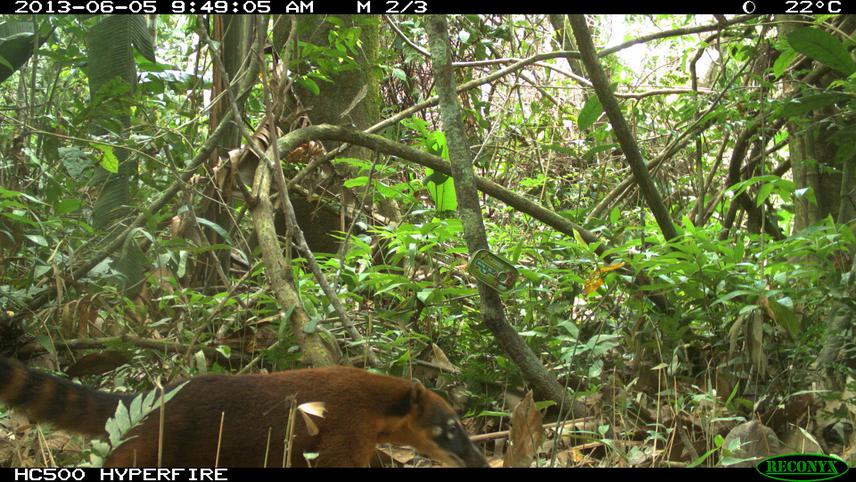Barbara de Queiroz Carvalho Zimbres
The study will aim at assessing how terrestrial mammals use riparian corridors in landscapes in different stages of the deforestation process.
The Amazon region currently presents high deforestation rates in its Southern part, known as the ‘deforestation arc’. The consequence is the loss and fragmentation of the natural primary forest, with still not fully known effects on the native fauna. In this context, it is crucial to understand the mechanisms associated with the persistence of terrestrial medium-sized and large-bodied mammal populations in disturbed areas, since this group includes threatened and data deficient species in the Amazon region, and must receive urgent attention.

Nasua nasua.
The maintenance of riparian corridors is one of the goals of landscape management for conservation, but the way in which different species use these connectors deserves clarification. The assessment of the usefulness of ecological corridors can help in the definition of which species are more or less sensitive to fragmentation, and also in the identification of those species that will benefit from this type of management strategy. Moreover, the effects of vegetation integrity loss in forest patches must also be considered, since the species’ responses to habitat degradation can be independent from their responses to fragmentation per se, although these are usually associated processes.
The present study will aim at assessing how terrestrial mammals use riparian corridors in landscapes in different stages of the deforestation process, as well as analysing whether habitat quality (measured as forest structural integrity) alters the observed corridor use patterns. Terrestrial mammals will be sampled by camera trapping and by line transect censuses, for the direct observation of individuals as well as for identifying any evidence of animal presence, such as tracks, digs, armadillo burrows, peccary bulldozing activity, scrapes, dung piles, carcasses, etc. Two landscapes selected for this study, located in the Mato Grosso state (Southern Brazilian Amazon), were initially similar ecosystems, but are currently in very different stages of in the fragmentation.
Results from this study will contribute to the knowledge about the intrinsic and extrinsic factors associated with ecological corridors that affect the efficiency of this kind of management. Also, there will be more available information about which species are more likely to benefit from the presence of corridors in fragmented landscapes.